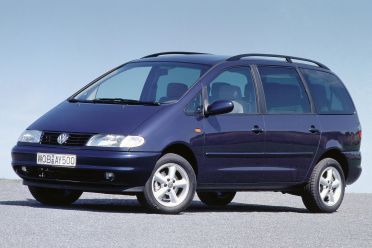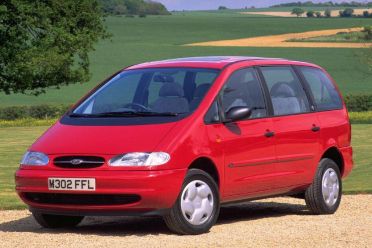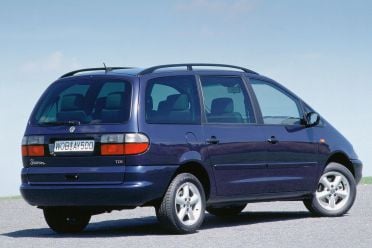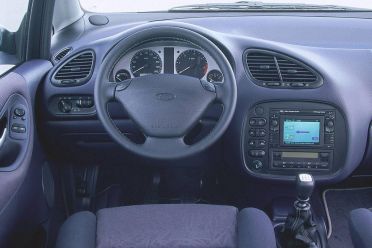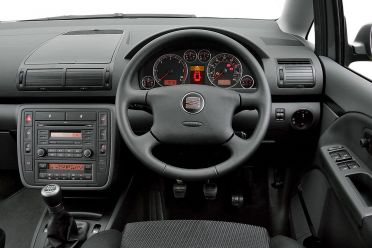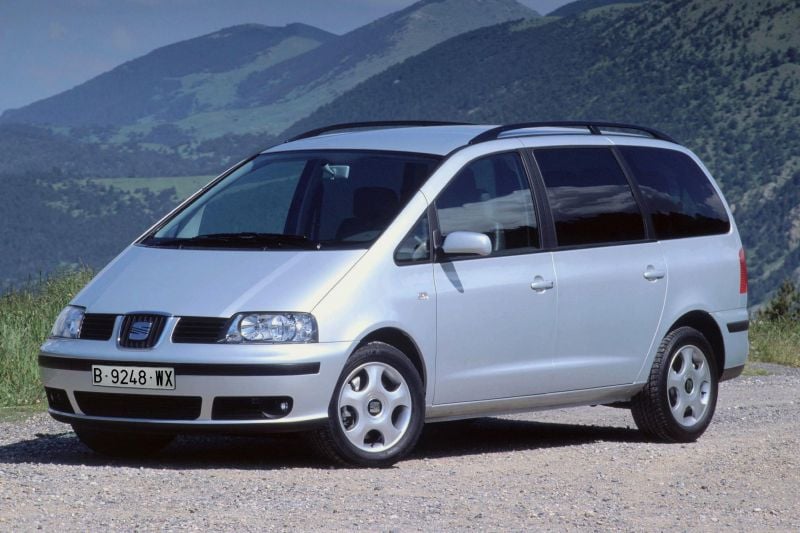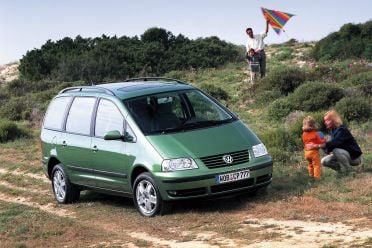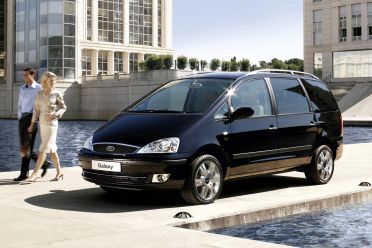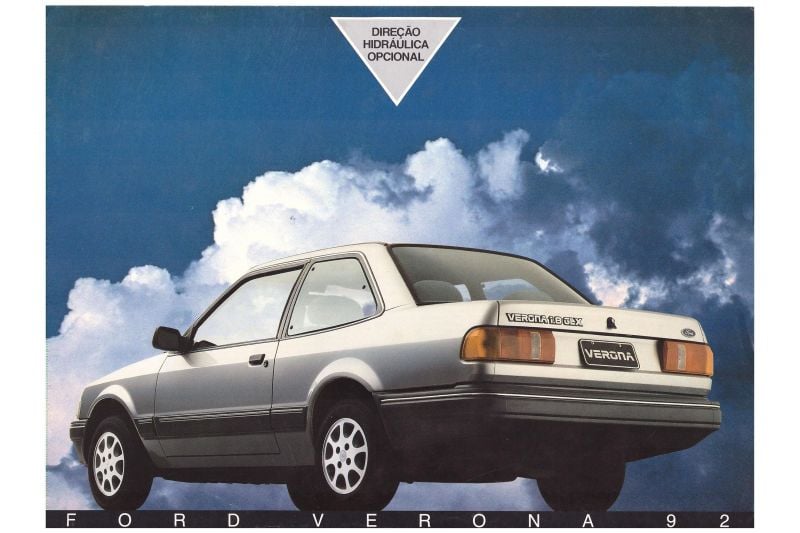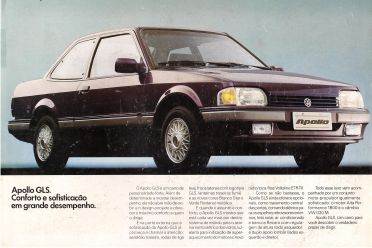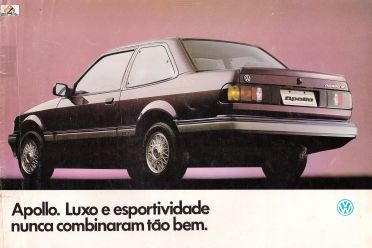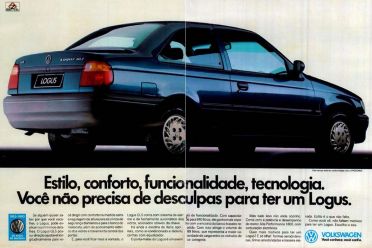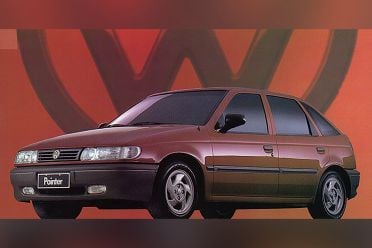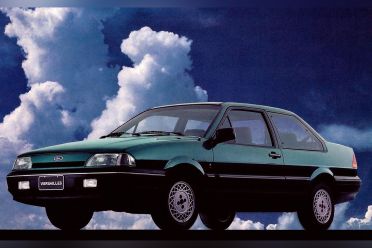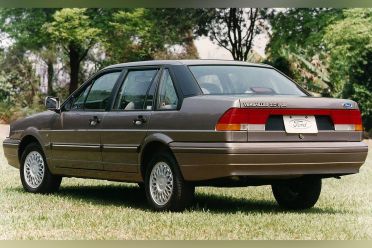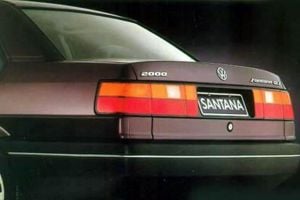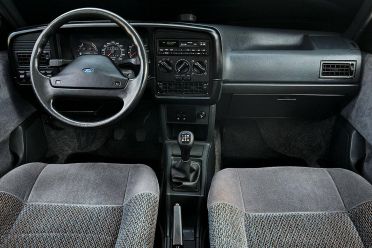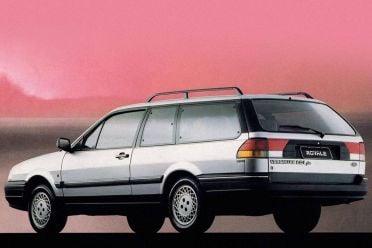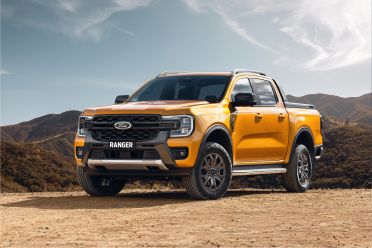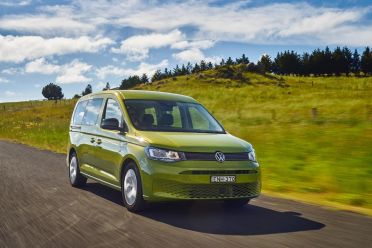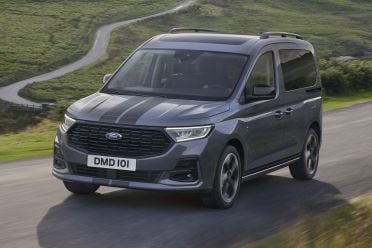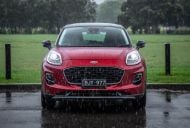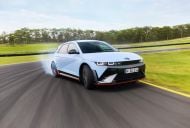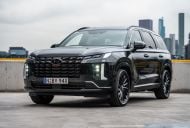The 2022 Ford Ranger has been unveiled, and a Volkswagen version will follow in the near future. For Aussies, this will be the most tangible aspect of the latest Ford and Volkswagen collaboration that includes vans and EVs.
Despite being fierce rivals, this isn’t the first time the automakers have worked together. Let’s jump into the TARDIS to check out the two previous times they worked together in a significant way.
AutoEuropa: 1991-2005
Let’s set the scene: It’s the beginning of the 1990s, and the automotive landscape is completely different. Hatches, wagons and sedans — with a good smattering of coupes, as well — dominate the scene in Europe.
Smaller luxury cars, such as the 3 Series and C-Class, weren’t yet mass sellers, so people still bought larger vehicles, such as the Mondeo and Passat, from mainstream brands.
Crossovers are nowhere to be seen as it’s still a few years away from the launch of the Toyota RAV4. Anything that looked like an SUV was designed to be taken off road, and were often too big and unsophisticated for most European buyers.
People movers provided one of the few alternatives to traditional body styles. Launched in 1984, the Renault Espace both created and dominated the European scene, with the Chrysler Voyager also a popular choice.
Automakers were only just recovering from the 1987 stock market crash and the resulting global economic downturn. So, it made plenty of sense for Ford and Volkswagen to join forces to attack this new-ish segment.
Their 50/50 joint people mover venture was created in 1991, with the automakers setting up a new factory in Palmela, Portugal, to produce the result of their tryst.
The Ford Galaxy and Volkswagen Sharan twins were launched in 1995, and were quickly dubbed the Sharalxy. A slightly cheaper Seat Alhambra version was added to the mix a few years in.
The Galaxy/Sharan was a true hodgepodge of parts and influences from both companies. Although the styling was done by Volkswagen, it seemed to fit more with Ford’s design philosophy with jellybean styling and a rounded dash.
Riding on a Volkswagen platform, all three people movers were sold with Volkswagen VR6 and diesel engines, and Ford four-cylinder petrol motors.
The facelift unveiled in 2000 saw greater differentiation between the brands, with the overall style moving towards Volkswagen’s blocky shapes. The rounded dashboard was junked in favour of one with a more formal Volkswagen design.
Although Volkswagen took full control of the factory in 1999, the plant on the outskirts of Lisbon continued to crank out Ford Galaxys until 2005, by which time over a million of the Sharan/Galaxy/Alhambra triplets had left the gates.
The Blue Oval ended up designing two generations of the Galaxy by itself, and continues to sell the Galaxy and related S-Max to this day.
Volkswagen updated the original people movers one more time before debuting a second generation of the Sharan and Alhambra in 2010. These two cars ended production in 2020.
The Palmela plant lives on today as the home of the Volkswagen T-Roc crossover, and has also produced the Eos and Scirocco.
AutoLatina: 1987-1995
While the Sharalaxy might be the first Volkswagen/Ford collaboration that springs to mind for most of us in the English-speaking world, it was preceded by a much grander alliance in Latin America.
In the 1980s, economies in the region were struggling with hyperinflation. Coupled with protectionist policies in the two largest markets, Argentina and Brazil, which effectively barred car imports, automakers found it difficult to invest in new products.
The two automakers formed AutoLatina in July 1987, merging their Brazil and Argentina operations into one company. Volkswagen owned 51 per cent of the new company, and Ford 49 per cent. The companies shared profits down the middle.
Despite the rough economic conditions, AutoLatina quickly became profitable by closing factories, and streamlining product ranges so there weren’t competing products based on different architectures.
Much like the Toyota and Holden joint venture, United Australian Automobile Industries, AutoLatina began cranking out badge engineered models in the early 1990s.
The first was the Volkswagen Apollo, a rebadged Ford Verona, which was a unique-to-Latin America two-door coupe version of the Mark II European Ford Orion, the Escort’s sedan sibling.
Made between 1990 and 1992, the Apollo was pitched a little further upmarket than the Verona with trim, lighting, suspension and interior differences.
The Verona employed a mix of Volkswagen and Ford engines, with the base 1.6-litre coming from Ford — albeit one that traced its roots back to a Renault design — and the 1.8-litre unit being a Volkswagen unit. Given the Volkswagen’s loftier positioning, the Apollo was only available with the larger mill.
The Volkswagen Logus, made from 1993 to 1997, effectively replaced the Apollo.
The design of the Logus was very clearly derived from the Mark III Ford Orion, the sedan derivative of the Mark V Escort, but this two-door body was unique to Latin America.
Indeed, the two-door was exclusive to Volkswagen in Brazil and Argentina, with Ford electing to only sell the Verona, the localised version of the four-door Orion sedan.
Entry-level models came equipped with a 1.6-litre Ford engine, while higher-specced variants used 1.8- and 2.0-litre Volkswagen motors.
From the 1994 to 1996 there was also the Volkswagen Pointer, the German company’s take on the Mark V Ford Escort.
Rather than slapping a bunch of Volkswagen badges on the Escort, and calling it a day, the Pointer featured quite a significant restyling. While the door apertures and wing mirrors clearly show the car’s lineage, all exterior body panels are unique.
The Pointer had round wheel arch flares, a character line above the door handles, and longer, wider headlights with a rounded treatment. At the rear, the Pointer had a stubby tailgate and thick tail lights, whereas the Escort had an expansive flat boot lid and slimmer lighting units.
Inside there was an even a unique dashboard that wouldn’t look out of place in contemporary Volkswagens sold back on the Continent.
Again lower-spec cars used 1.6-litre Renault-derived Ford engines, while higher grades came with either 1.8- or 2.0-litre Volkswagen engines.
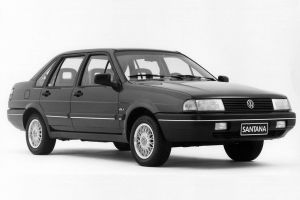
Via Car.Blog.Br
In 1991 production of the long-lived Falcon ceased in Argentina, while the decade-old Del Rey was put out to pasture in Brazil. Both models were essentially replaced in 1992 by a fleet of rebadged and restyled Volkswagens.
The two-door and four-door sedans were known as the Ford Versailles in Brazil and Ford Galaxy in Argentina, and based on the contemporary Volkswagen Santana.
For those looking for something a little more practical there was the Ford Royale, the Blue Oval’s take on the Volkswagen Quantum three- and five-door wagons.
In order to make these vehicle more Ford-like, the company changed the front and rear ends, and restyled the dashboard. All body styles except the two-door coupe had blacked out D-pillars for a floating roof look.
All of these models were based on the second-generation Passat, and powered by the same 1.8- and 2.0-litre engines as their Volkswagen siblings.
While Volkswagen and Ford shared many models, AutoLatina continued to produce unique models for both brands.
For example, there wasn’t a Ford version of the popular entry-level Gol, and Volkswagen never affixed its badges to the ancient Falcon, which was a squared-off rehash of the original 1960s model.
As economic conditions in South America improved, AutoLatina’s market-leading position lead to healthy profits, but for one half of the partnership grey clouds were on the horizon.
In the 1990s Brazil and Argentina ended their automotive import restrictions, replacing them with heavy tariffs.
This brought greater competition from newer and more modern vehicles made overseas, as well as new brands. In 1995, Ford and Volkswagen decided to close down AutoLatina and split the company’s assets, with most factories returning to their original owner.
As this 1997 report from the The New York Times details, the divorce suited Volkswagen, but it left Ford in a real mess with annual losses in the region topping an eyewatering US$645 million in 1996.
Part of the reason for this was Ford’s lack of a competitor in the entry-level segment.
Prior to the dissolution of AutoLatina, Ford took 50 per cent of profits from the popular Volkswagen Gol. After the breakup, though, the company spent many years without a locally-made competitor.
Current collaboration
Sadly the latest partnership between Ford and Volkswagen hasn’t been given a funky name because the two companies aren’t forming a joint venture to house assets.
Perhaps given the troubled ending for AutoLatina, the two automakers have been at pains to insist there are no plans for cross-shareholdings or other forms of capital tie-up.
Formalised in 2019, the latest collaboration between Ford and Volkswagen is focussing on three main areas:
- Joint development of commercial vehicles.
- Joint development of autonomous driving technology.
- Ford using the Volkswagen MEB EV architecture for cars to be built and sold in Europe
The first vehicles to benefit from the partnership were the Ford Transit Connect and Tourneo Connect, which are versions of the Volkswagen Caddy.
While the Ford vans have a unique front-end design, some styling differences at the rear, and a few interior tweaks, they are basically rebadged versions of the Caddy.
If reports and teasers are correct, the second-generation Volkswagen Amarok will differ significantly from the just-unveiled Ford Ranger, with a completely unique exterior at a minimum.
Other projects under way include the next-generation Volkswagen Transporter, which will be based on the Ford Transit Custom, and at least one European Ford model riding on Volkswagen’s MEB EV architecture.

